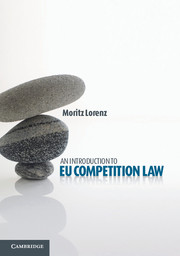Book contents
4 - Article 102 TFEU – abuse of a dominant position
Published online by Cambridge University Press: 05 May 2013
Summary
Introduction
Article 102 TFEU complements the regulations of EU competition law dealing with agreements between two or more undertakings. The provision restricts certain conduct by undertakings which have a dominant position in a given market. Although dominant undertakings are in principle free to engage in diverse economic activities exactly as their competitors do, they have a ‘special responsibility’ not to hinder competition on the market. This term was first used in one of the ECJ’s landmark decisions on the abuse of a dominant position. It concerned the tyre manufacturer Michelin. During the administrative procedure, the Commission established that Michelin had a dominant position on the market for new replacement tyres for lorries, buses and similar vehicles and that it had abused this position by way of its rebate and bonus system. In the subsequent appeal proceedings the ECJ confirmed the Commission’s finding that Michelin had a dominant position on the market for replacement tyres and added:
A finding that an undertaking has a dominant position is not in itself a recrimination but simply means that, irrespective of the reasons for which it has such a dominant position, the undertaking concerned has a special responsibility not to allow its conduct to impair genuine undistorted competition on the common market. (emphasis added)
Thus, Article 102 TFEU does not prohibit dominance as such. It merely places specific restrictions on companies that have a dominant position.
Elements of Article 102 TFEU
Article 102 TFEU governs abusive conduct by dominant undertakings. The possession or strengthening of a dominant position by way of competition does not fall within the scope of the prohibition. Dominance alone is never an offence. The dominance of many global players (such as Microsoft or Intel) is a direct result of their inventions and entrepreneurship. The competition regime generally encourages such efforts as they form the basis of our society’s competitive layout. Therefore, unless there is an abuse, there can be no finding of an infringement of Article 102 TFEU. On the other hand, the provision specifies that the concerned undertaking must have a dominant position in the relevant product market. Accordingly, it does not apply to abusive practices by non-dominant undertakings. Such practices may, of course, be subject to other prohibitions. In essence, Article 102 TFEU stipulates two major requirements: a dominant position and an abuse. If the Commission finds such a dominant position and an abuse it may impose a fine on the dominant undertaking.
- Type
- Chapter
- Information
- An Introduction to EU Competition Law , pp. 188 - 241Publisher: Cambridge University PressPrint publication year: 2013



